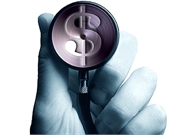However, share of income is greatest among households with lowest income
MONDAY, Jan. 27, 2020 (HealthDay News) — Health care payments in the United States are more regressive than previously thought, according to a study published online Jan. 27 in Health Services Research.
Katherine Grace Carman, Ph.D., from the RAND Corporation in Santa Monica, California, and colleagues combined data from multiple sources (the Survey of Income and Program Participation, Medical Expenditure Panel Survey, Kaiser Family Foundation/Health Research Educational Trust Employer Health Benefits Survey, American Community Survey, and National Health Expenditure Accounts) to measure the burden of financing health care costs and quantify redistribution among population groups. The analysis considered all payments made by households to support health care, including taxes and employer contributions.
The researchers found that higher-income households pay the most to finance health care in dollar amounts, but the burden of payments as a share of income is greater among lower-income households. Specifically, households in the bottom fifth of income groups pay an average of 33.9 percent of their income toward health care, while families in the highest income group pay 16 percent of their income toward health care. Households in the middle three income tiers pay between 19.8 and 23.2 percent of their income toward health care.
“Understanding how different groups contribute to and benefit from health care spending is difficult for researchers, policymakers, and the general public,” Carman said in a statement. “This work provides better insight into how the American health care system redistributes contributions and spending across different parts of society.”
Copyright © 2020 HealthDay. All rights reserved.








